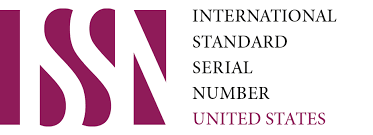Diversity of Narrative Functionality in Short Fiction Films
Keywords:
Diversity of narrative functionality, short fiction filmAbstract
Finding a balance between using and employing complex narrative techniques and clearly conveying the idea to the recipient in short fiction films. 2- Finding solutions to the problems of time gaps in the narrative building of a short film. 3- Revealing the various narrative functions within the structure of the short film. The research relied on a (case study) represented in a film sample according to a descriptive analysis because it fits the nature of the research depending on a clear and specific tool, and the research community is short fiction films, and the research results are: - Control of time and intensification is the biggest challenge that the short film maker is faced with in order to make a coherent narrative building according to a balanced plot that is not naive nor complex.
References
Odith Kirswill, The Age of Structuralism, translated by Jaber Asfour, Arab Horizons House, Baghdad: 1985. 2. -Janetti, Louis D., Understanding Cinema, translated by Jaafar Ali, Baghdad: Dar Al-Rasheed for Printing and Publishing, 1981. 3. -Salah Muhammad Taha, Narrative Segments in the Structure of the TV Series, University of Baghdad, Journal of the College of Arts / Issue 98, 2011 4. Taher Alwan, Cinematheque on August 25, 2007 5. -Abdullah Ibrahim, The Narrative Imaginary, Cairo: The Arab Cultural Center, 1994 6. -Ezz El-Din El-Wafi, the script of the short film.. A vision for the world 7. -Maher Majeed, Temporal Structures in Film Narrative, University of Baghdad, 2005. 8. -A group of authors, Theory of the Formal Approach, translated by Ibrahim Al-Khatib, Beirut: Arab Research Foundation, 1982. 9. -Moroccan News Today website - the short film: peculiarities and components 10. -Yann Manfred, The Science of Narration, translated by Amani Abu Rahma, Nineveh House,
Downloads
Published
Issue
Section
License

This work is licensed under a Creative Commons Attribution 4.0 International License.
User Rights
Under the Creative Commons Attribution-NonCommercial 4.0 International (CC-BY-NC), the author (s) and users are free to share (copy, distribute and transmit the contribution).
Rights of Authors
Authors retain the following rights:
1. Copyright and other proprietary rights relating to the article, such as patent rights,
2. the right to use the substance of the article in future works, including lectures and books,
3. the right to reproduce the article for own purposes, provided the copies are not offered for sale,
4. the right to self-archive the article.












